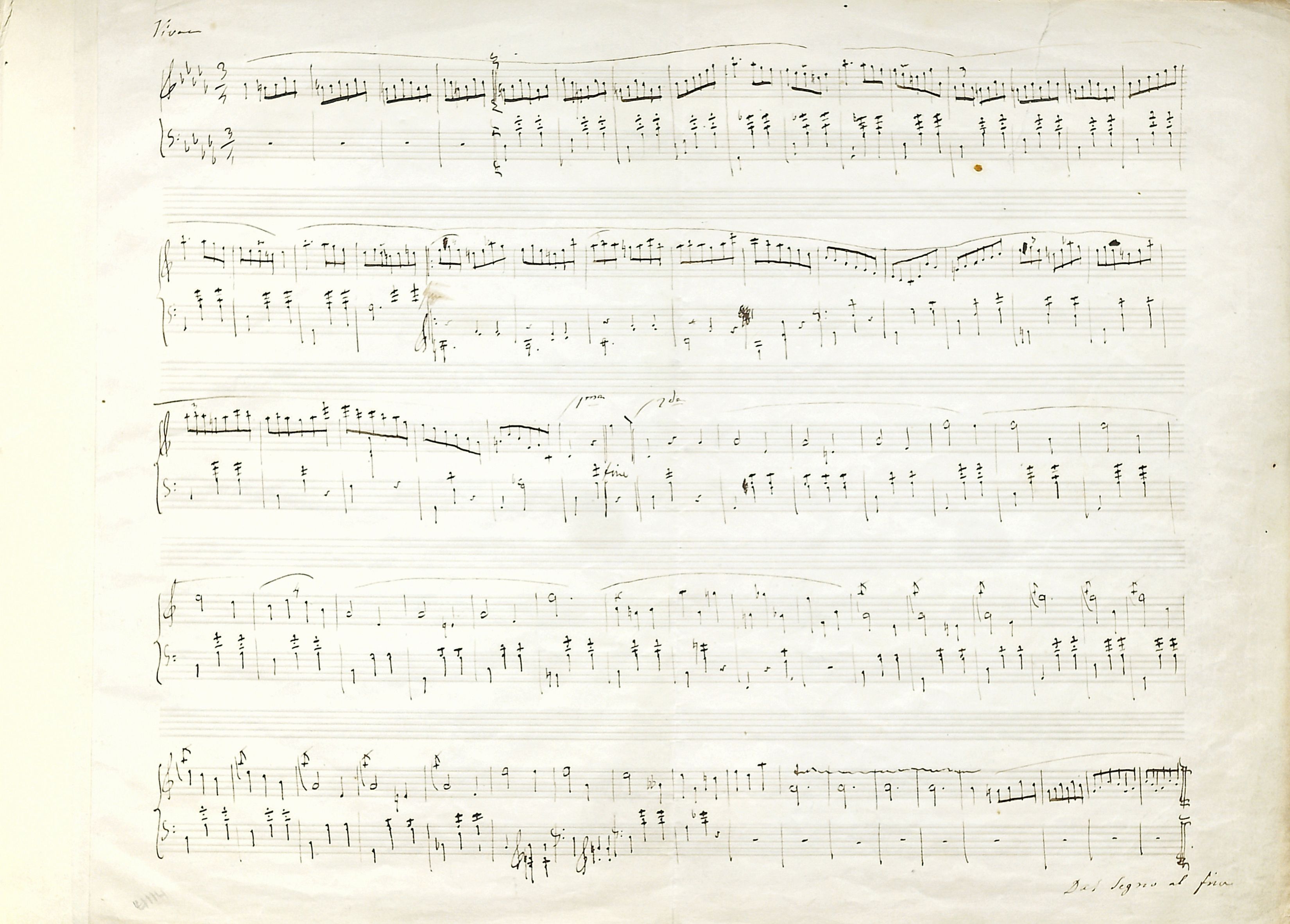




|
||

|
||

|
8 notes in FES, more likely reading |
The addition in FES, having the form of a g 2 note inserted between f2 and a
2 note inserted between f2 and a 2 and a slur starting from the printed phrase mark and ending on the added note, poses interpretation difficulties. The signs are written in ink, which points to the pupil's hand; moreover, the stem of the added note, put on the left-hand side of the note head, is another argument against a possibility that it was Chopin that was the author of the entry. It is meaningful, since one can explain Chopin's entry, perhaps of a draft character and completed with an oral explanation, in a different manner than a pupil's note supposed to preserve a remark or a variant imparted to her by the Master during a lesson.
2 and a slur starting from the printed phrase mark and ending on the added note, poses interpretation difficulties. The signs are written in ink, which points to the pupil's hand; moreover, the stem of the added note, put on the left-hand side of the note head, is another argument against a possibility that it was Chopin that was the author of the entry. It is meaningful, since one can explain Chopin's entry, perhaps of a draft character and completed with an oral explanation, in a different manner than a pupil's note supposed to preserve a remark or a variant imparted to her by the Master during a lesson.
The interpretation that applies in the first place is an eight-bar figure, which we give as the most likely version of FES. The slur would then indicate the range of the triplet movement. Such a variant, although not excessively sophisticated, would be one of numerous examples of diversification by fragmentation, on which Chopin was very keen – cf., e.g. the note to the Mazurka in G minor, Op. 24 No. 1, bar 59. Moreover, the version of As proves that the very printed text is already an example of such a diversification. However, the placement of this variant is surprising – enriched, fragmented motifs generally appear at the last repetition of a given phrase; therefore, we would expect the variant in one of the three following repetitions (bars 101, 109 or 117).
Perhaps, then, the added slur means that the group of six notes embraced with it is supposed to fill the entire bar. It would be a return to the version known from As and the following similar motifs with the version with a triplet (in bars 95, 101, 103 and analog.) would be a natural solution of this simplest structure. We include this possibility as an alternative interpretation.
Compare the passage in the sources »
category imprint: Interpretations within context; Differences between sources; Corrections & alterations
issues: Annotations in teaching copies, Annotations in FES, Authentic post-publication changes and variants
notation: Rhythm

